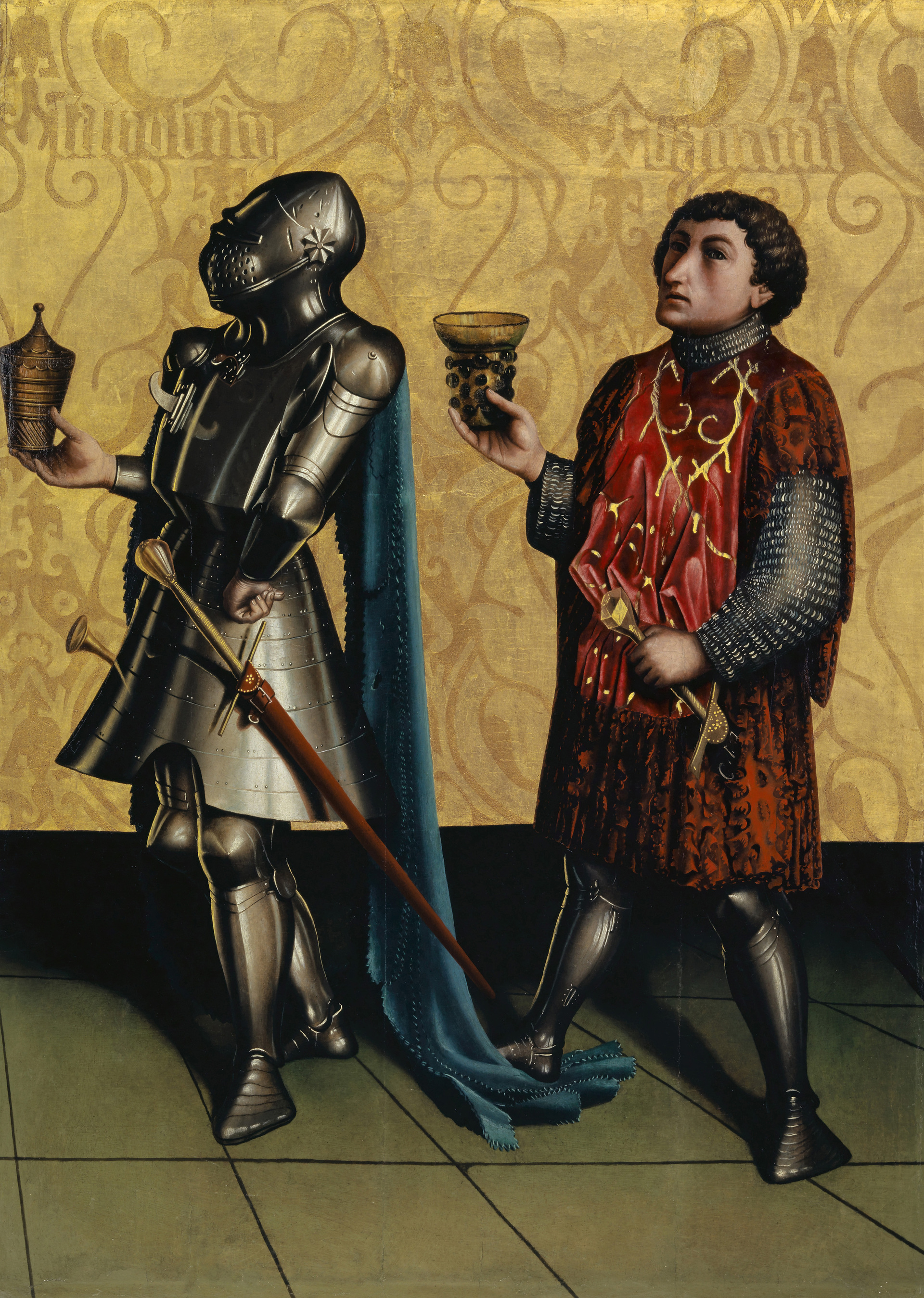
Shop Amazon - Create an Amazon Baby Registry
Sabobai and Benaiah Panel from the ‘Mirror of Salvation Altarpiece’ by Konrad Witz for St. Leonard’s in Basel, c.1435.
Kunstmuseum Basel, Switzerland.



‘Mirror of Salvation Altarpiece’ for St. Leonard’s in Basel.
Konrad Witz is one of the most radical innovators in the art of painting of the first half of the fifteenth century. He arrives in Basel in 1434, probably attracted by the international atmosphere created by the ecumenical council of the Christian Church that is held in the city in those years. By 1447 he must have died. During this brief period of little more than a decade he creates a series of grand altarpieces, of which only individual panels survive. These paintings evince a powerful new interest in the outside world as perceived in immediate experience. The significance given to light and shadow, to reflections, to the spatial depth of architectures and landscapes attests to Witz’s familiarity with contemporary Flemish painting.
Source: Kunstmuseum Basel
Sabobai and Benaiah
by Konrad Witz
Date: c.1435; Basel, Switzerland
Style: Northern Renaissance
Series: Mirror of Salvation altarpiece
Genre: religious painting
Media: wood, tempera
Location: Kunstmuseum Basel, Basel, Switzerland
Source: wikiart
Referenced as figure 110. GERMAN KNIGHT c.1440 in Armies of the Middle Ages, Volume 2 by Ian Heath:
This figure is based chiefly on an altarpiece by Konrad Witz, with a few details (such as the spurs and gauntlets) added from another altarpiece, by Jan van Eyck, in St Bavon’s Church, Ghent. The fashion of wearing complete plate-armour was introduced into Germany from Italy by c.1430, and this knight is comprehensively armoured so that not a single part of him is left unprotected.
His breastplate differs somewhat from that of figure 109 in that the upper portion now slopes distinctly forward, away from the chest, and then angles back towards the waist. Called a Kastenbrust, this form of breastplate evolved during the 1420s and remained popular until about the middle of the century. Thereafter it gave way to a flatter type, usually fluted, with a pronounced vertical ridge. The long fauld, typical of the 1430s and the early 1440s, is arched at the bottom for riding (some having tassets in place of the lowest 2 plates) and has a leather strap rivetted to either side for the sword scabbard and dagger.
His helmet is a ‘great bascinet’, strapped down to the breast and backplates. This type of helmet had first appeared in Germany by c.1420 at the latest, even though the ordinary bascinet of the last few figures continued to appear alongside it until about 1440. It was closer-fitting than those worn in England and France, which tended to retain the pointed crown of the earlier Hundsgugel.